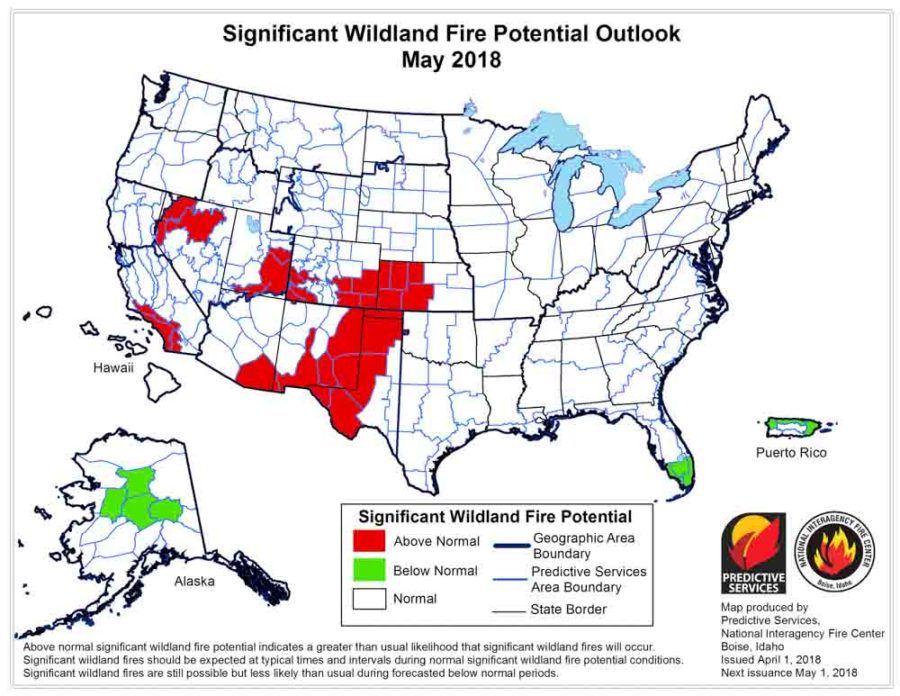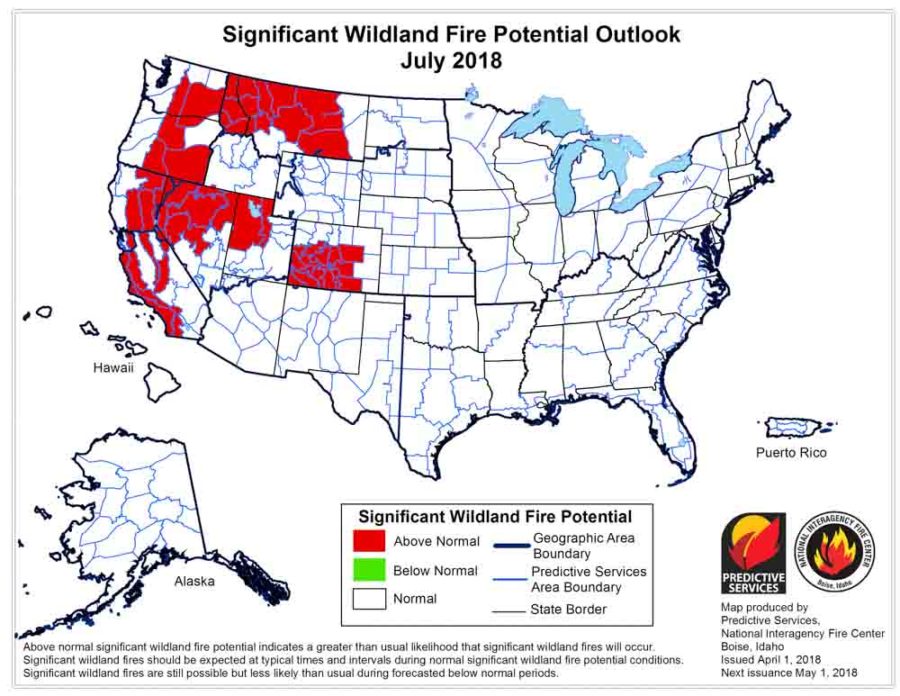Is Colorado in for an Active Wildfire Season?
How you can help your clients properly mitigate against wildfire.
In the months of April, May, June and July, Colorado and other states in the West/Northwest could see above normal wildfire activity, according to the Wildland Fire Potential Outlook provided by the National Interagency Fire Center. The overwhelming majority of counties across the state of Colorado appear at above normal risk through the height of wildfire season.
For the state of Colorado, the outlook predicts: “Continued drought and predicted temperature and precipitation patterns during the spring, above average fuel loading, and increasing cases of warm, dry and windy patterns through May are also expected to exacerbate the above average fire risk. Above average fire risk is predicted to expand across the remainder of southern Colorado into central Colorado for the May, and especially the June-early July period due to drought and persistent warm and dry forecasts overall. Snowpack is near historical minimums over the mountains of southern Colorado, and above average large fire activity (especially June) is highly correlated to years with very low spring snowpack. June-August core fire season acres burned is forecast to be above average for the first time since 2012.” Read the entire study here.


Colorado Project Wildfire:
Colorado REALTORS®, in partnership with other like-minded fire prevention organizations across our state, have been working to bring education and awareness, as well as access to resources for residents in Wildland Urban Interface (WUI) areas.
You can help homeowners take steps to protect their property and help alleviate the spread of wildland fires. Many Coloradans living in the foothills in ponderosa and lodge pole forests or in arid grassland communities need to consider the fire-prone nature of these ecosystems.
- Create Defensible Space Around A Home
- Reduce the Structural Ignitability of The Home
- Use FireWise Practices
Due to Colorado’s arid climate and fire-dependent forests, many homeowners and landowners may be particularly vulnerable to wildfires. As a REALTOR®, you can help educate them on FireWise practices when buying or building a home.
By creating wildfire-defensible zones, homes are less vulnerable from this naturally occurring phenomenon and the chance of spreading wildfires is greatly reduced.
For more information and tools you can share with clients, visit https://coloradorealtors.com/projectwildfire/


